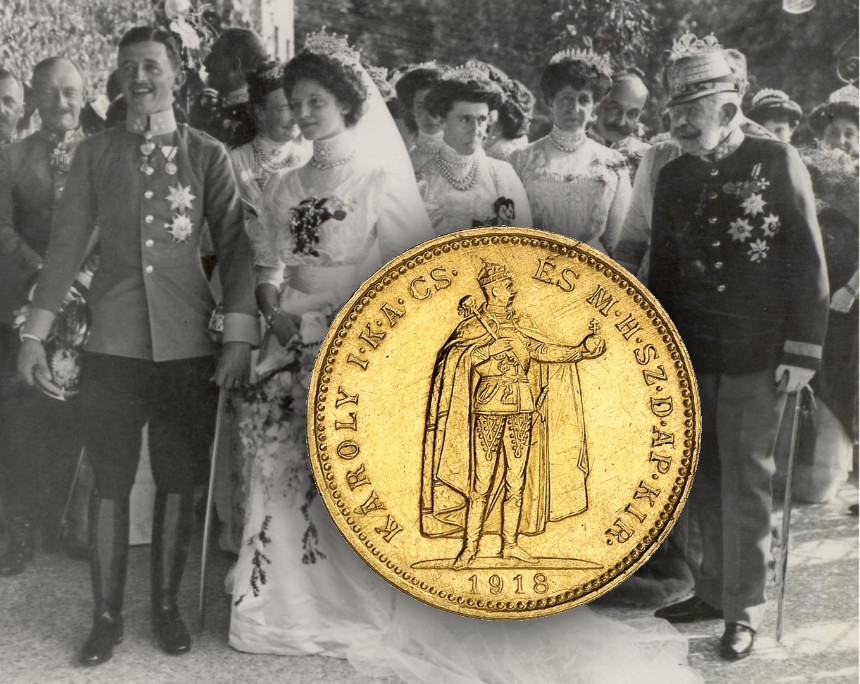Charles I of Austria-Hungary: A Hapless Emperor Who Was Beatified
by Johannes Nollé
On Thursday, 20 June 2024, the Künker auction house will offer a very special numismatic rarity: a 1918 20-kronen piece of Charles I, the last Emperor of Austria-Hungary. It is such a special piece because only a few gold coins were minted under this ruler – and of those few pieces, the one offered by Künker is the only one that is not in a museum. Charles I is said to have given this coin to his nurse on his deathbed as a token of gratitude.
Content
A Hungarian Coin
In Austria-Hungary, there were both Austrian/Cisleithanian coins, whose legends were written in Latin and whose motifs prominently featured the double-headed imperial eagle, and Hungarian/Transleithanian coins, which used the Hungarian language and whose designs focused on the crown of St. Stephen. One of these Hungarian coins is the 1918 20-kronen piece of Charles I of Austria alias Charles IV of Hungary. This coin is so rare that there will probably not be another chance to acquire it for a collection any time soon.
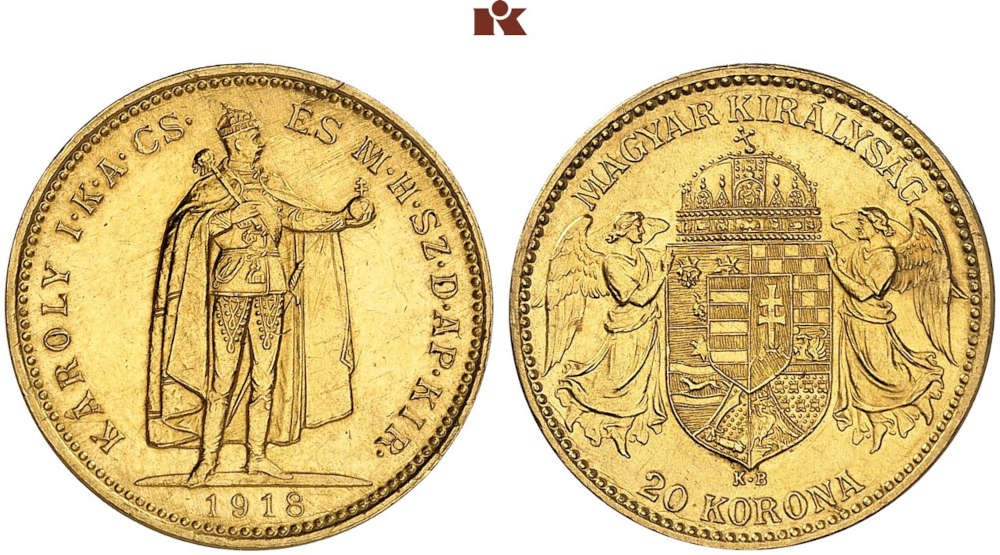
Charles I, 1916-1918. 20 kronen, 1918, Kremnica. Extremely rare. Probably the only specimen on the market. From Rauch auction 73 (2004), lot No. 3404. Extremely fine. Estimate: 150,000 euros. From Künker auction 409 (20/21 June 2024), No. 2052.
With the death of Emperor Franz Joseph I on 21 November 1916, his great-nephew Charles automatically became Emperor of Austria-Hungary. The Hungarians attached great importance to the fact that he was to be crowned with the Crown of St. Stephen in Budapest and that he would swear an oath to the Hungarian constitution. The Hungarians were proud of their nation and wanted to prevent Charles from implementing the ideas of Franz Ferdinand, who had been assassinated in Sarajevo, by transforming the German-Hungarian dual monarchy into a German-Hungarian-Slavic triple monarchy. Such a reform of the Habsburg Empire would have meant that the Slavic territories that were subject to the Hungarian crown would have been removed from the Kingdom of Hungary. Charles was therefore crowned King of Hungary on 30 December 1916 in Budapest.
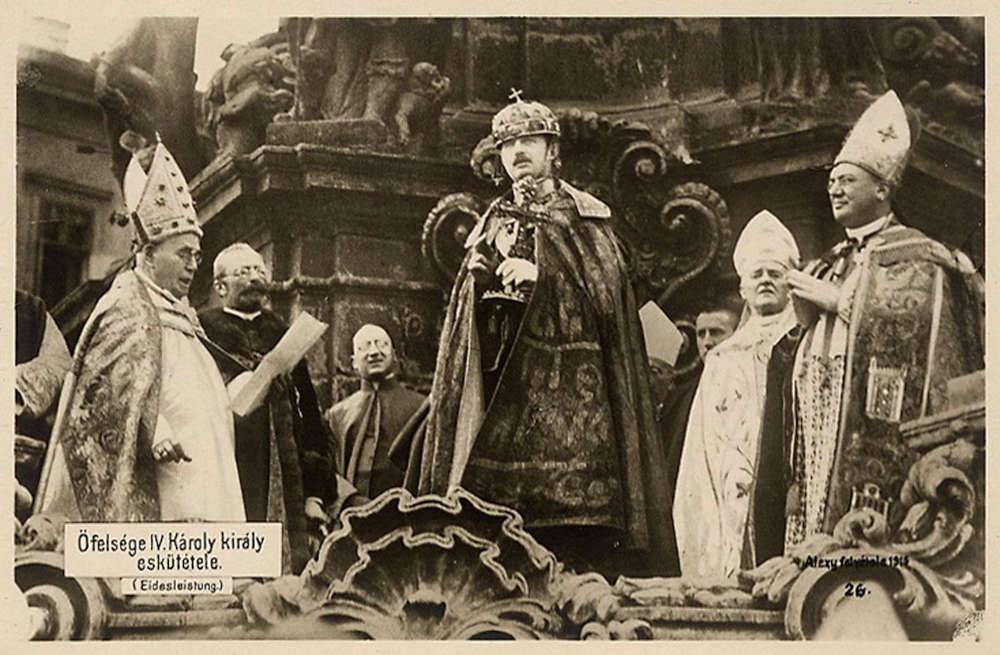
Charles IV of Hungary takes his coronation oath in Budapest on 30 December 1916. To his left is Cardinal János Csernoch, Archbishop of Esztergom and Primate of the Hungarian Church.
So there is good reason why the extremely rare original Hungarian 20-kronen piece shows Charles at his coronation with the Crown of St. Stephen. The Hungarian legend reads KÁROLY, I(sten) K(egyelméböl) A(usztria) CS(ászára) ÉS M(agyar-), H(orvát-), SZ(lavon-) D(almátországok) AP(ostoli) KIR(álya), which translates to “Charles, by the grace of God Emperor of Austria, and of Hungary, Croatia, Slavonia and Dalmatia Apostolic King”.
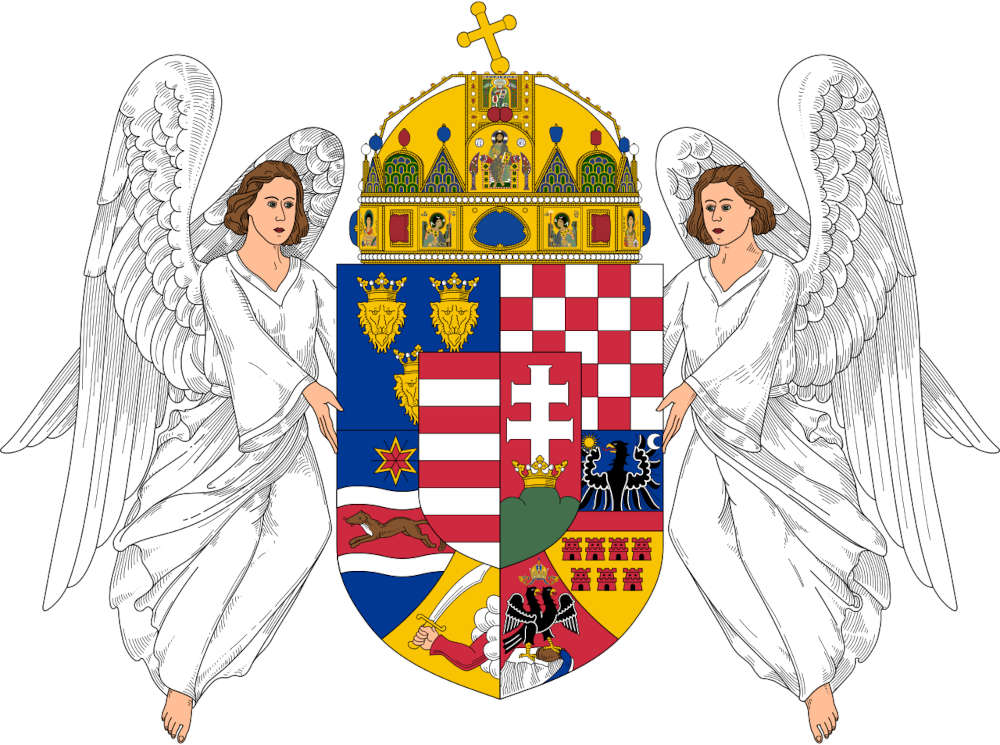
The coat of arms of the Hungarian crown used from 6 November 1915 until 29 November 1919. cc-by 1.0 Jozsef Sebestyén / Thommy.
On the reverse is the coat of arms of the Apostolic Kingdom of Hungary, held by two angels and surmounted by the Crown of St. Stephen: from top to bottom, the six-part shield shows the coats of arms of Dalmatia (3 lion heads), Croatia (red and white chequered pattern), Slavonia (marten between the Sava and Drava rivers), Transylvania (black eagle and seven castles), Bosnia-Herzegovina (arm with sword) and Fiume/Rijeka (double-headed eagle on a flowing amphora). The two coats of arms of Hungary are superimposed in a split inescutcheon: on the left the shield of Old Hungary (Hungarian plains), which is divided into a total of seven horizontal red and white stripes; on the right the shield of New Hungary with the white patriarchal cross standing on a green row of three mountains (Tátra, Fátra, Mátra), which is intended to symbolize the apostolic dignity of the Hungarian Kingdom, conferred by the Pope.
Below the coat of arms, the place of minting, Kremnica, is given in Hungarian: K(örmöcz)B(ánya). The legend reads: MAGYAR KIRÁLYSÁG, which translates to “Hungarian Kingdom”. The edge reads HARCBAN ÉS BÉKÉBEN A NEMZETTEL A HAZÁÉRT, which translates to “In battle and in peace with the people for the homeland”. On the Austrian coins, the Hungarian edge inscription corresponds to Charles’ Latin motto PACE BELLOQVE OMNIA PRO PATRIA CVM POPVLO MEO.
A Ruler Out of His Depth and the Demise of an Empire
Charles, who was not yet thirty years old when he ascended the throne and whom the old emperor had introduced to the reins of government too late, was completely overwhelmed by the desperate situation in which Austria found itself in the midst of the First World War. He was unable to alleviate the increasingly tangible economic and social crisis. His efforts to initiate peace negotiations failed, because Germany was seeking a victorious peace (“Siegfrieden”) and Charles was not prepared to accept the loss of territory (such as Trentino to Italy). As a result, he was unable to prevent the complete collapse of his empire in October 1918.
After the republic was proclaimed in Berlin on 9 November, there was increasing pressure for Charles to abdicate. On 11 November 1918, he was forced to sign a declaration of renunciation in Schönbrunn. On 13 November, the Hungarians also forced Charles to formally renounce his government duties. On 23 March 1919, Charles and his family were forced to emigrate to Switzerland; but having just left Austria, Charles took advantage of this to revoke his abdication on 24 March 1919. The Austrian National Council then passed the Habsburg Law, which prohibited Charles and his wife Zita in particular from returning to Austria, but also other family members who refused to recognize Austria as a republic. Furthermore, the Habsburg family fund was confiscated and all titles of nobility were abolished.
At Easter 1921 and again in October of the same year, Charles tried in vain to regain at least the Hungarian royal throne. As the victorious powers of First World War were not interested in a renewed military conflict in Europe, they now wanted to get rid of Charles. The Hungarian parliament declared the Habsburgs deposed on 6 November 1921. After a brief imprisonment, Charles and his wife Zita were transferred to a British ship on the Danube on 1 November, which took them to the Black Sea. There, an English man-of-war took them on board and brought them into exile in Madeira.
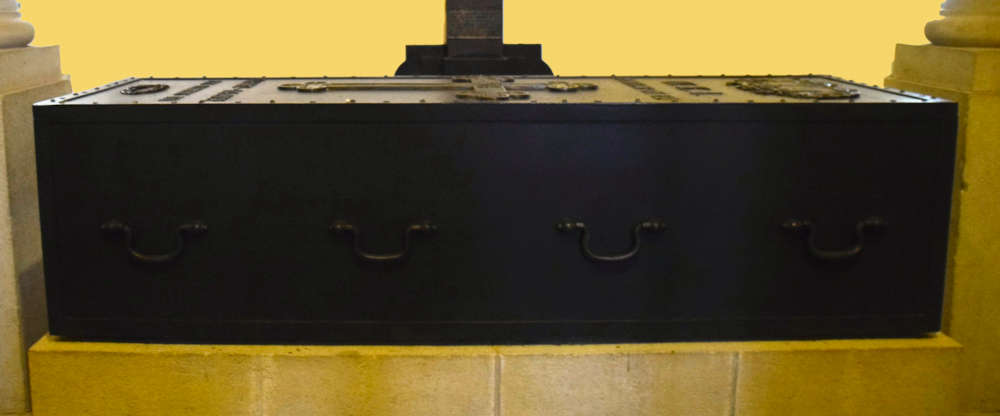
The last Emperor of Austro-Hungary does not rest in peace in the Capuchin crypt in Vienna but in the church of Nossa Senhora do Monte in Funchal. Photo: Johannes Nollé.
The End in Madeira
Charles and Zita arrived on the island on 19 November 1921, where they and their children initially lived in an annex of the famous Reid’s Hotel in Funchal, but the deposed imperial couple soon ran out of money for their expensive accommodation. A banking family provided Charles and his family with lodging in the Quinta do Monte, a manor house above Funchal. The humid climate there took such a severe toll on Charles’ health that he died in Monte on 1 April 1922 at the age of 34.
On 4 April 1922, he was buried in a side chapel of the pilgrimage church of Nossa Senhora do Monte. Nowadays, a statue of Charles looks down on Funchal from the square beneath the church. Attempts by his wife Zita to transfer him to the Capuchin crypt in Vienna were not successful. However, with the support of the controversial Bishop Krenn, she succeeded in having Charles beatified by Pope John Paul II in 2003. They said that the beatification was justified as Charles had worked tirelessly in the name of peace and had performed several miracles after his death in response to invocations.





